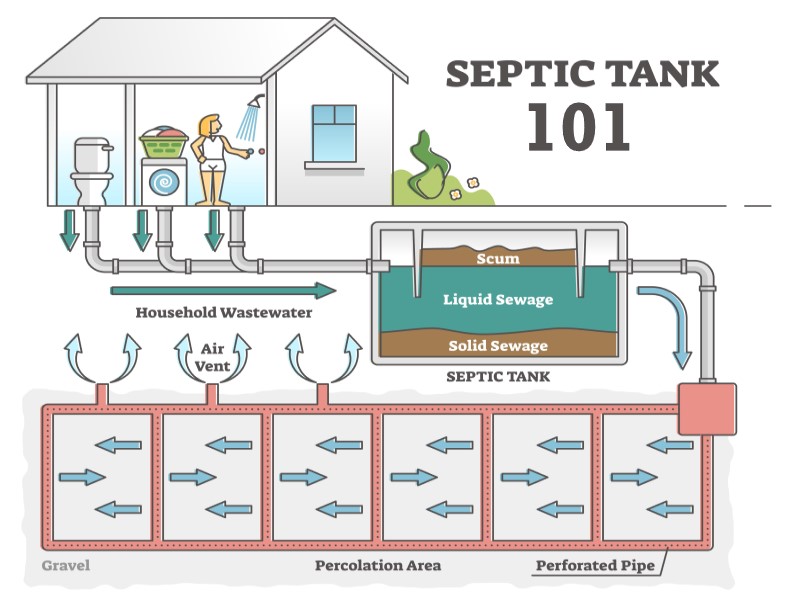A septic tank is an underground wastewater treatment system that is commonly used in areas where centralized sewage treatment is not available. It is typically found in rural areas and in homes that are not connected to municipal sewage systems.
The septic tank works by breaking down solid waste and allowing the liquid effluent to flow into a drain field or leach field where it is absorbed into the soil. We will cover everything you need to know about septic tanks, including how they work, how to maintain them, and common problems that can occur.
How Does A Septic Tank Work?
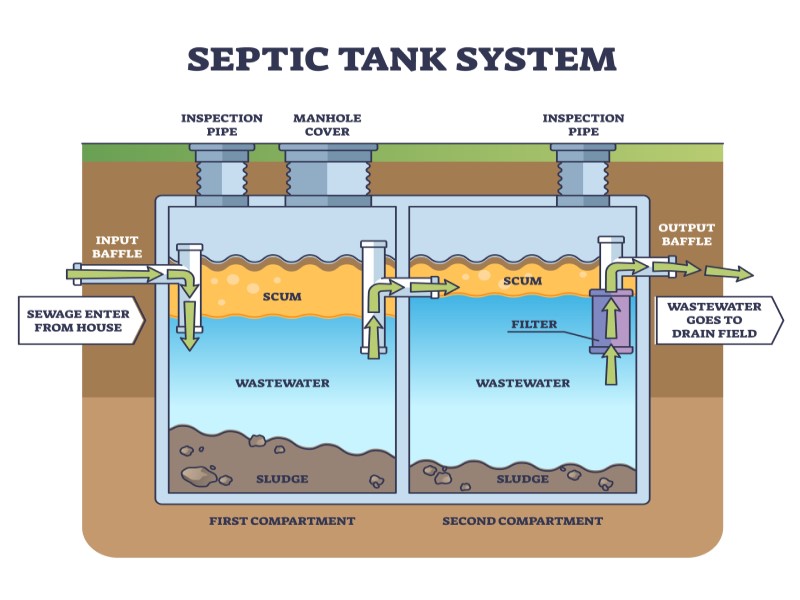
First and foremost, how does a septic tank work? The tank is a large, watertight container that is buried in the ground. It is typically made of concrete, fiberglass, or plastic and is designed to hold between 1,000 and 2,000 gallons of wastewater.
The tank is divided into two compartments by a baffle or divider wall. The first compartment receives the raw sewage from the house, while the second compartment allows for further treatment and settling of the effluent before it is discharged into the drain field.
Inside the septic tank
Inside the septic tank, the solid waste settles to the bottom and forms a layer of sludge. Grease and oils float to the top and form a layer of scum. The liquid effluent in the middle layer is then discharged into the drain field where it is absorbed into the soil. The drain field is a series of perforated pipes or trenches that are buried in the ground and covered with gravel. The effluent from the tank flows into the drain field and is slowly absorbed into the soil.
Septic Pumping
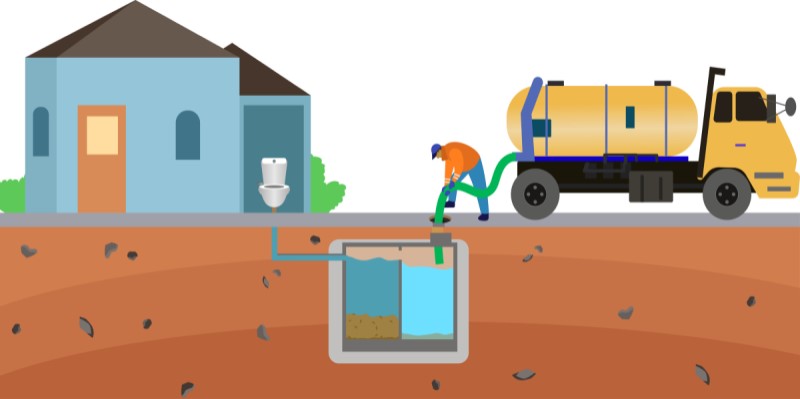
Next we will cover how often should a septic tank be pumped. Your septic system tank should be pumped on a regular basis to remove the accumulated sludge and scum. The frequency of pumping depends on the size of the tank and the number of people in the household. As a general rule, septic tanks should be pumped every three to five years.
However, if you have a large household, use a garbage disposal frequently, or have a small septic tank, you may need to pump your tank more often. If you are unsure when your tank was last pumped, you should have it inspected by a professional.
Septic Tank Maintenance
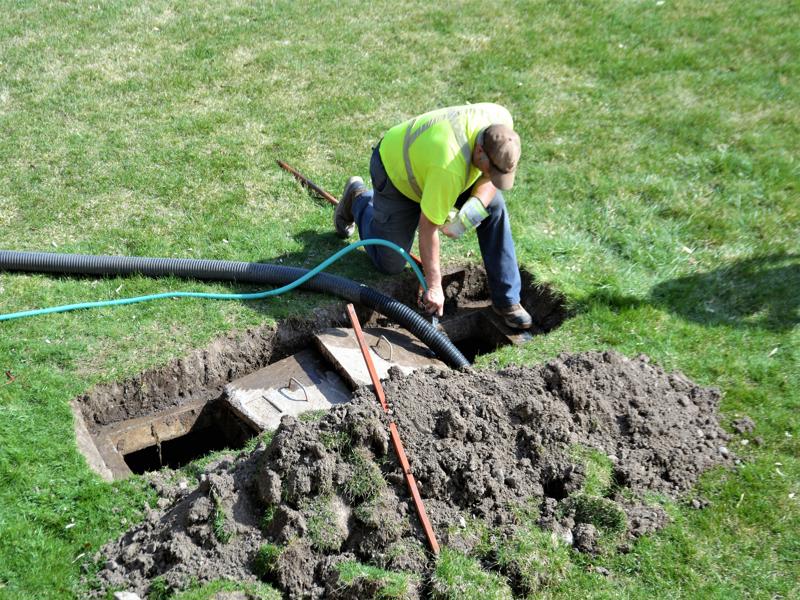
Additionally, you should know how to maintain a septic tank. Proper maintenance is essential to the longevity and effectiveness of your septic system tank. Some key tips to keep your septic system running smoothly are as follows. Do not flush anything other than toilet paper and human waste down the toilet. This includes items like paper towels, feminine hygiene products, and baby wipes. These items can clog your pipes and cause damage to your septic system.
Furthermore, avoid pouring grease, oils, and fats down the drain. These materials can clog your pipes and cause damage to your septic system. Instead, dispose of them in the trash. Also, use water efficiently. Too much water can overload your septic system and cause it to fail. Be sure to fix any leaks and repair any dripping faucets or running toilets. Explore more septic care and maintenance from the EPA.
Use septic-safe cleaning products
Another good maintenance tip is to use septic-safe cleaning products. Harsh chemicals can kill the beneficial bacteria in your septic tank that break down the waste. Use septic-safe cleaning products or natural alternatives like vinegar and baking soda.
Inspect Your Septic Tank
Finally, have your septic tank inspected and pumped regularly. Regular inspections and pumping can prevent costly repairs and prolong the life of your septic system for years to come. There are many common septic tank problems that can arise and that you should be on the lookout for.
A septic tank is a critical component of a home’s plumbing system. It is responsible for collecting, treating, and disposing of wastewater generated in the home. However, septic systems are susceptible to various problems that can compromise their efficiency and performance. The clues to look for are blockages, foul odors, septic tank overflow, damage to the tank, drain field problems, sludge and scum build up, and pumping problems.
Septic tank blockages
One of the most common septic tank problems is blockages. Blockages can occur for various reasons, including flushing non-degradable items down the toilet, excessive use of garbage disposals, or pouring grease down the drain. Blockages can cause the septic tank to overflow, leading to sewage backups in the home. Blockages can also cause the pipes leading to the septic tank to clog, which can result in slow draining sinks and toilets.
Foul odors
Foul odors are another common problem. Septic tanks are designed to treat wastewater, but if they are not maintained correctly, they can produce unpleasant smells. Foul odors can be caused by a buildup of sludge and scum in the tank, a clogged drain field, or a damaged tank. These odors can be a sign that there is a problem with your septic tank, and it is important to address the issue promptly to prevent more significant problems from developing.
Overflowing septic tank
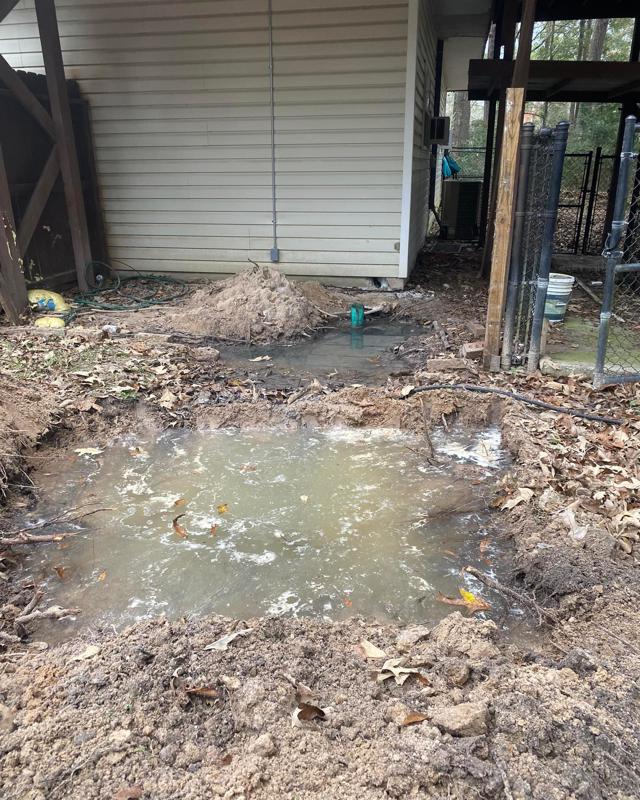
Moreover, septic tank overflow is a serious issue that can arise. Overflows occurs when the tank exceeds its maximum capacity and begins to discharge wastewater onto the ground. This can happen when the tank is not emptied regularly, or when there is excessive water usage in the home. Septic tank overflows can cause a foul odor, damage to the drain field, and contamination of groundwater. It is important to have the septic tank pumped regularly to prevent overflow.
Damage to the tank
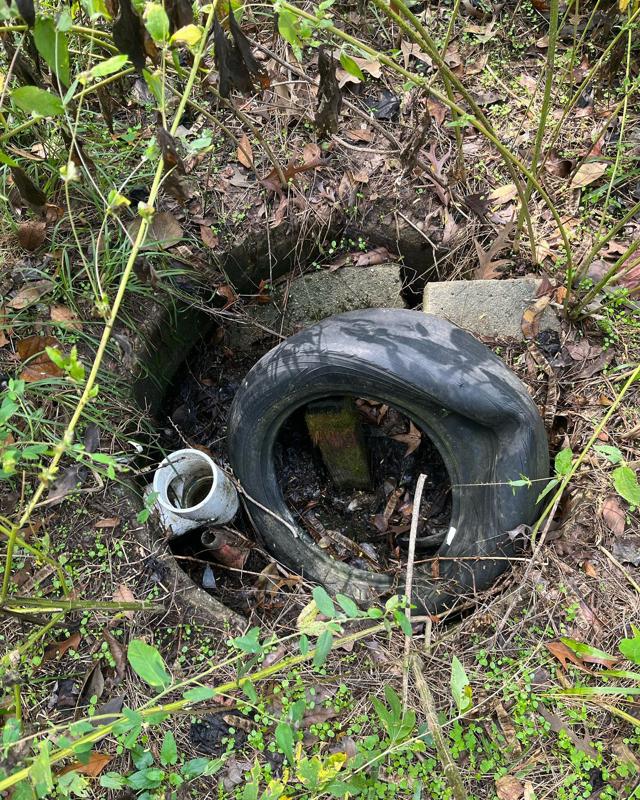
Additionally, damage to the tank can become a very large problem if not dealt with quickly. Septic tanks are susceptible to damage from a variety of sources. For example, heavy equipment driving over the tank can cause cracks or fractures, allowing wastewater to leak out.
Tree roots can also damage septic tanks by infiltrating the tank or blocking the drain field. Moreover, freezing temperatures can cause the tank to crack or rupture. It is essential to address any damage to the septic tank promptly to prevent more significant problems from developing.
Drain field problems
Drain field problems are yet another issue that can pop up. The drain field is an essential component of the septic system that filters wastewater before it enters the groundwater. If the drain field becomes clogged or damaged, it can lead to wastewater backups in the home and contamination of groundwater. Common causes of drain field problems include excessive water usage, poor soil conditions, and damage to the pipes. Regular maintenance of the septic system can help prevent drain field problems.
Sludge & scum buildup inside septic tank
Sludge and scum buildup is a common problem in septic tanks. Sludge is the solid waste that settles to the bottom of the tank, while scum is the floating layer of oils and fats that accumulates on the surface. If the sludge and scum are not removed regularly, they can clog the pipes leading to the septic tank and cause blockages. Additionally, excessive buildup of sludge and scum can lead to foul odors and contamination of the drain field.
Regular pumping of septic tank is essential
Finally, regular pumping of the septic tank is essential to maintain its efficiency and prevent problems. However, pumping problems can occur if the tank is not pumped often enough or if it is not pumped correctly. If the tank is not pumped frequently enough, the sludge and scum can accumulate, causing blockages and foul odors. If the tank is not pumped correctly, it can lead to damage to the tank or drain field.
Contact Strictly Septic Service to learn more about your septic system, explore repair options or hire them for all you new septic needs.

